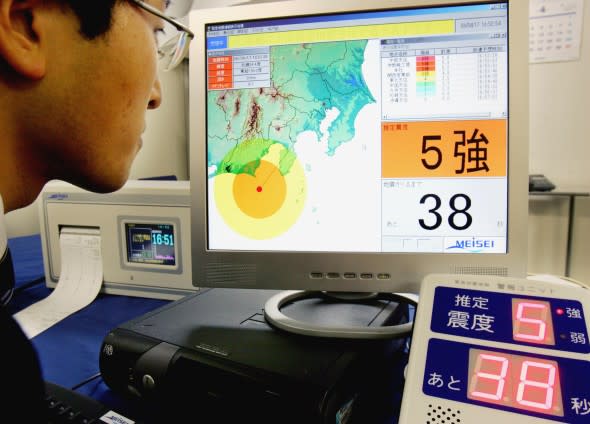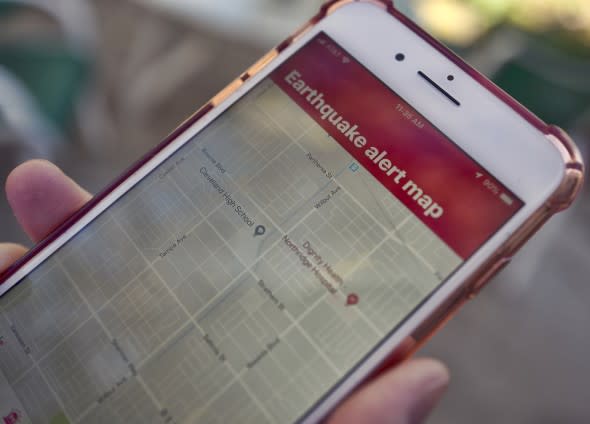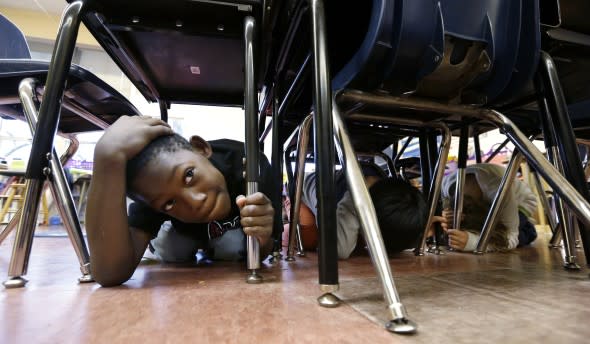How earthquake early alert warnings work and protect millions of lives

As earthquakes shake regions and cause massive, unpredictable destruction, an early-warning system that provides a precious few seconds of alert could make the difference in saving someone's life.
Those moments of advance warning help people get cover, find protection and be prepared for the magnitude of ensuing shakes. Technological advances in recent years have made these early warning systems far more effective than ever before.
Tokyo, Japan, is home to the most advanced public early alert earthquake system in the world. Issued by the Japan Meteorological Agency (JMA), the system relies on 4,235 seismometers located around the island nation. According to the agency, the system has been in use since 2007, and alerts are triggered by two or more seismometers sensing a P-wave. From that detection, a warning is sent via television and radio to people in the surrounding areas.
P-waves, or primary waves, are pressure waves that travel faster than any other type of seismic wave. P-waves and S-waves are types of body waves which are the seismic waves that move through the interior of the Earth. The other type of seismic waves are surface waves, which travel along the Earth's surface.
The objective of any early earthquake warning system is to detect the initiation of a quake as quickly as possible. By detecting for P-waves, systems can pinpoint the initial release of energy from an earthquake and release the warning as soon as possible.

According to the California Integrated Seismic Network (CISN), using P-waves to estimate the magnitude of earthquakes can help determine the extent of shaking people in the region should prepare for.
"The method can provide warning before the S-wave, which brings the strong shaking that usually causes the most damage, arrives," CISN.org says. "The CISN's tests of earthquake early warning in California have demonstrated that the warning time ranges from zero seconds to a few tens of seconds, depending on the epicenter of the earthquake."
In 2011, Tokyo was struck by a magnitude 9.0 quake, the country's worst earthquake in over 300 years. While the earthquake and ensuing tsunami left most of country's northeast region in ruins, seismologists said that the results could have been far more deadly if not for the early warning systems. After the system's sensors picked up the P-wave triggers, alerts were sent around the country and residents in Tokyo, 230 miles away, had a 10-second warning to get cover.
"Ten seconds is time to turn the gas off if you're cooking," seismologist George Mussonn told homelandsecuritynewswire.com. "And that could make all the different between your house burning down or not."
The massive Tokyo system, which cost an estimated $500 million to develop, is the worldwide benchmark for early earthquake warning systems. With another similar system in Mexico City and the new developments in Los Angeles, the rest of the world is starting to take notice of how crucial the alert systems are.
However, disaster preparedness expert Dennis Mileti, who is also the director emeritus of the National Hazards Center, says that the new systems are just the start of proper public warnings. To Mileti, "public education is paramount in early earthquake warning" systems.
"If you're in a high-rise office building, one of the things that earthquakes do is mess up the electrical supply," Mileti said. "If you, before the warning was issued, educated the public or put a placard somewhere like an elevator that said, "do not use during earthquake warning," it would save many people from being trapped in elevators if a quake hits and power goes out. Just those kinds of applications and situations will be much easier with the early warning system."

A student covers his head and holds onto a table during a statewide earthquake drill, at Lowell Elementary School Thursday, Oct. 20, 2016, in Seattle. Schools, businesses, and community organizations conducted similar exercises across the state Thursday as part of the annual Great Washington ShakeOut earthquake and tsunami readiness program. (AP Photo/Elaine Thompson)
Mileti believes that improved public education will only make the early warning systems more effective. He specifically mentioned how the culture around people's responses towards warnings can be shaped from an implementation in early education.
"The other wonderful thing that these early warnings can do is to train people, especially kids in school, on what to do ahead of time," he said. "Kids these days practice fire drills and over time the culture changes... we could train all the kids in all the schools in Los Angeles to get under their desks, drop cover and hold on. We could actually get them to do that in a few seconds, and it wouldn't take much."
As Mileti and other seismologists have stressed, these early warning systems will only improve as time goes on. In Tokyo, for example, seismologists learned how to develop methods of protections for sensors that get damaged or overloaded with data.
In Los Angeles, and with all future early warning systems, Mileti hopes the culture around disaster warning response changes too.
"If you have an eight-second warning on your cell phone about an earthquake, what's the first thing you might do? You might turn to the person next to you and say ‘what the blank is that?' What that means is that Los Angeles and other parts of California, as this system grows, need to educate the public. It won't be automatic, it's something that you're going to have to drill into people."

